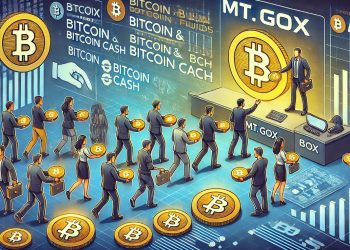
NFT games have created a new buzz in the crypto and blockchain space. Play-to-earn models evolved from the early-stage NFTs like CryptoKitties. By integrating finance with the gaming industry, a whole new space, known as Game-Fi, is providing opportunities to earn income by playing games.
Within NFT games, players can earn in multiple ways. While traditional models of earning through gameplay involve finding, winning, or breeding rare collectibles, players can choose to experiment with various gaming models. One of the prototypes gaining significant popularity is “Play-to-Earn.”
An NFT (non-fungible token) represents a unique item. It is a digital cryptographic token developed on blockchain technology. NFTs have multiple use cases, like digital assets in a game, a collectible piece of crypto art, or a real-world object like real estate.
NFT games are different from the virtual collectibles that can be held in our wallets. They involve NFTs in the rules, mechanisms, and player interactions in the game. For instance, within an NFT game, a unique character or avatar could be an NFT, or virtual items like the weapons used in the game could also be NFTs.
Players can swap or trade the NFTs with other players to earn profits. The new model in NFT games, i.e., the play-to-earn model, offers players a way to earn from NFT games. The NFT game is created by implementing rules and conditions in a smart contract.
Play-to-earn NFT games offer the chance to generate income to the users through playing. The longer they play, the more tokens and occasional NFTs will be rewarded to the players. The tokens earned hold utility inside the game, or they can be sold on exchanges. Typically, In this model of NFT games, users can consistently earn tokens along with the rare distribution of NFTs.
Axie Infinity has emerged as one of the popular play-to-earn NFT games. The users need to purchase three “Axies,” the Pokemon-like pet of the game, as an initial investment or get a scholarship from another player to start playing the game, who then might be able to claim a percentage of the user’s earnings. Axies can range in price, but can sometimes cost upwards of $200 USD. Once a user finds a starter team and continues to complete the tasks and challenges, they can earn Smooth Love Potion (SLP), an ERC-20 token that can be traded on exchanges.
In-game NFTs provide another way of generating income from NFT games. In-game NFTs allow users to earn NFTs representing collectible items, unlike fungible tokens such as Axie Infinity’s SLP.
The collectible items have different values based on their cosmetics, rarity, or utility within the game. One of the examples of the in-game NFTs is CryptoKitties. They rely completely on the collectibility of in-game NFTs. The latest NFT games offer both play-to-earn models and in-game NFTs.
Most of the NFT games available today are based on Binance Smart Chain (BSC) and Ethereum (ETH). While some games offer a traditional video game experience, most games center mainly on collecting NFTs. Here are some other emerging NFT games:
This is a fantasy football game that involves tradeable and collectible soccer players from real life. Users can create a soccer team with five players by using free cards or purchasing tokenized cards. Players can earn more points and level up their game every time they win, score a new goal, or complete an event.
Gods Unchained is a tradable NFT game built on Ethereum, and it is similar to “Magic: The Gathering” and “Hearthstone.” Players build decks with the powers and strengths they possess to fight other players. As the players win, they can earn in-game items to use or sell.
Some ranked games, including Gods Unchained, allow players to earn Flux. Flux can be used to craft powerful NFT cards. Players can profit by selling them or reinvest in new cards and continue the process.
The NFT marketplaces on Binance offer an NFT gaming experience to the users with the help of NFT mystery boxes and collection partnerships. They can range from digital artists to NFT games. Every mystery box contains a random NFT of different rarity and collections. Users can open the box to reveal the NFT, or they can even sell it without opening the box.
NFT collections contain NFTs and Mystery Boxes that are centered around a theme or a project. Game-fi Mystery Box Collections are the most popular collections, including:
- The MOBOX Collection: This platform is built on BSC and combines DeFi yield farming with NFTs. The NFT Mystery boxes contain MOMO NFTs with random hashing power on the MOBOX platform. If the hashing power is higher, then the MOMOs will be more valuable in MOBOX’s games.
- The My Neighbour Alice Collection: My Neighbour Alice is a virtual world-building game. The game features NFT cosmetic items. The assets contained in the Collection’s Mystery Boxes are only cosmetics. Users will value them and give them worth in the secondary market.
NFT games involve digital collectibles and create rules for players to interact within the ecosystem. Users value their NFTs either for their collectibility or their utility. Game-fi has created a new gaming economy and is changing the way users can acquire and use NFTs.



















